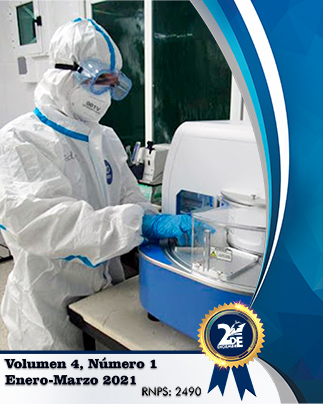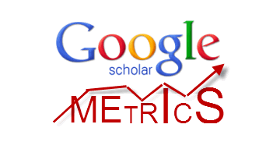Advance and achievements of the methodology in science and technique of the Cuban Health System
Keywords:
Science, technology, National system of HealthAbstract
Introduction: the evaluation of the impact of the science and the technology constitutes a strategic necessity, as road of verification of the development of a country and of its scientific politics.
Objective: to describe the methodology of the science and the technology, their achievements and advances in the Cuban national system of health.
Method: it was taken to end like part of a work developed by the students in the development of the primary attention of health. It was gathered in the period of December to January of the 2020. They were not kept in mind exclusion approaches and they used scientific methods as: historical-logical; inductive-deductive and analysis-synthesis. Results: it was deepened in the behavior of the science and the technology in the last decades, being evaluated the achievements and advances of these in the Cuban system of health. The science and the technique have transcended for evolutionary stages that are guided in uncertainties among the environmental thing, the human thing, the education, and the social problems in front of the challenge of the sustainable development.
Conclusions: from the implementation of the national system of science, technology and innovation, impelled by Fidel Castro Ruz, advances and important impacts have been achieved in the Cuban system of health among those that are: investigation centers, wide base technique of the system of health, to computerizeof the National System of Health, the automation.
Downloads
References
1. Lage A. Sociedad del conocimiento y soberanía nacional en el siglo XXI: el nexo necesario. La Habana: Fundación Alejo Carpentier. [Internet]. 2017 [citado 18 Oct 2019. Disponible en: https://www.scielosp.org/pdf/rpsp/2018.v42/e32/es
2. Ortiz Torres, E A.. La evaluación del impacto científico en las investigaciones educativas a través de un estudio de caso. Rev elect de invest educ .[Internet]. 2015 [citado 18 Oct 2019]. 17(2): 1-12. Disponible en: http://www.scielo.org.mx/pdf/redie/v17n2/v17n2a7.pdf
3. Bohorquez-Chacón LF. La universidad, los problemas sociales de la ciencia y la tecnología frente al reto del desarrollo sustentable. Aibi revista investig. adm. ing. [Internet]. 2016 [citado 2 de Oct de 2019];4(1):1. Disponible en: https://revistas.udes.edu.co/aibi/article/view/381
4. Columbié Pileta M, Morasen Robles E, Bandera Sosa L, Acevedo Ayala JM, del Coral Williams Abellé E, Gutiérrez Vera D. Principios de la gestión de ciencia e innovación tecnológica en tecnología de la salud. Rev Tecnol.[ Internet]. 2019 [citado 18 Oct 2019]; 10 (1). Disponible en: http://www.revtecnologia.sld.cu/index.php/tec/article/view/1329
5. Núñez Jover, Jorge, & Montalvo Arriete, Luis F. La política de ciencia, tecnología e innovación en Cuba y el papel de las universidades. Rev Cubana de Educación Superior.[Internet] 2015 .[citado 2 de Oct de 2019] 34(1), 29-43. Disponible en: http://www.scielo.org.mx/pdf/redie/v17n2/v17n2a7.pdf
6. Sánchez Daza, G.La ciencia y tecnología en el desarrollo : Una visión desde América Latina..[ Internet]. 2009 [citado 2 de Oct de 2019] Disponible en : http://bibliotecavirtual.clacso.org.ar/Mexico/uacp-uaz/20100322012242/CYTED.pdf
7. Pegudo Sánchez Agustín, Cabrera Suárez Mayra, López Gómez Eugenio, Cruz Camacho Lisvette. Estrategia pedagógica para desarrollar habilidades investigativas en asesores de trabajo de investigación científico estudiantil. Rev EDUMECENTRO [Internet]. 2012 Abr [citado 2019 Oct 02] ; 4( 1 ): 95-103. Disponible en: http://scielo.sld.cu/pdf/edu/v8n1/edu11116.pdf
8. Marin Heimar de Fátima, Cunha Isabel Cristina Kowal Olm. Perspectivas atuais da Informática em Enfermagem. Rev. bras. enferm. [Internet]. 2006 June [cited 2019 Oct 02] ; 59( 3 ): 354-357. Disponible en: https://www.scielo.br/pdf/reben/v59n3/a19v59n3.pdf
9. Pérez Ones Isarelis, Núñez Jover Jorge. Educación Superior y desarrollo económico y social en Cuba: a propósito de la "Tercera MisiónHigher Education and socio-economic development in Cuba: high rewards of a risky high-tech strategy. Rev Hum Med [Internet]. 2009 Abr [citado 2019 Oct 02] ; 9( 1 ). Disponible en: http://scielo.sld.cu/pdf/hmc/v9n1/hmc010109.pdf
10. Rojo Pérez N, Valenti Pérez C, Martínez Trujillo N, Morales Suárez I, Martínez Torres E, Fleitas Estévez I, et al. Ciencia e innovación tecnológica en la salud en Cuba: resultados en problemas seleccionados. Rev Panam Salud Publica. .[ Internet] 2018 [citado 18 Oct 2019] ;42 (32). Disponible en: https://doi.org/10.26633/RPSP.2018.32
11. Lage A. La empresa de alta tecnología y la gestión de discontinuidades.No. 276. La Habana: Editorial Universidad de La Haban; 2014. p. 82-97.
12. Vialart Vidal MN, Vidal Ledo MJ, Sarduy Domínguez Y, Delgado Ramos A, Rodríguez Díaz A, Fleitas Estévez I, et al. Aplicación de la eSalud en el contexto cubano. Rev Panam Salud Publica. .[ Internet] 2018 [citado 18 Oct 2019]; 42:(19). Disponible en: https://doi.org/10.26633/RPSP.2018.19.
13. González RR, Cardentey GJ. Las universidades cubanas: instituciones educativas de excelencia. Revista Habanera de Ciencias Médicas. [Internet] 2015 .[citado 18 Oct 2019;14(5):715-716. Disponible en: http://www.revhabanera.sld.cu/index.php/rhab/article/view/658
14. Díaz Cuéllar F, Bolaños Ruíz O, Cuervo Ledo J. Análisis de la implementación de la Instrucción 1 en la Universidad de Ciencias Médicas de Matanzas. Una propuesta para su perfeccionamiento. Rev Méd Electrón [Internet]. 2016 [citado 18 Oct 2019];38(3):[aprox. 8 p.]. Disponible en: http://www.revmedicaelectronica.sld.cu/index.php/rme/article/view/1915
15. Pérez Sánchez A, Paredes Esponda E, León Rodríguez A, Pérez de Hoz G. Impacto de la innovación tecnológica en el desarrollo de la salud cubana.. INFODIR [Internet]. 2017 [citado 8 Jul 2020];0(24):[aprox. 12 p.]. Disponible en: http://www.revinfodir.sld.cu/index.php/infodir/article/view/397
Downloads
Published
How to Cite
Issue
Section
License
Authors who have publications with this journal agree to the following terms: authors retain their copyright and grant the journal the right of first publication of their work, which is simultaneously subject to the Creative Commons Attribution-NonCommercial 4.0 International License that allows third parties to share the work as long as the author and first publication in this journal are indicated, for non-commercial use. Authors may adopt other non-exclusive license agreements for distribution of the published version of the work (e.g., depositing it in an institutional telematic archive or publishing it in a monographic volume) as long as the initial publication in this journal is indicated. Authors are allowed and encouraged to disseminate their work via the Internet (e.g., in institutional telematic archives, in their web page or in Pre-print servers) before and during the submission process, which can lead to interesting exchanges and increase citations of the published work. (See The Open Access Effect).







